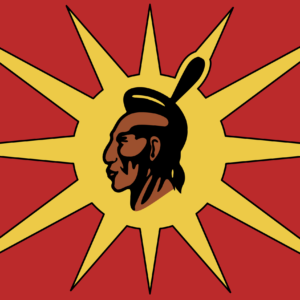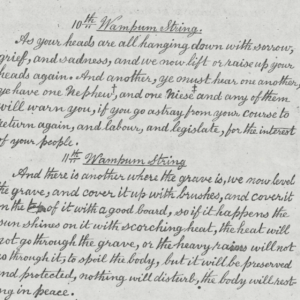
The three sisters make their first mentions in the Haudenosaunee Creation Story, left behind in the grave of Sky Woman.
In the time period that colonists began to push the concepts of European farming practices upon Haudenosaunee men, who instead, turned to iron working, there were hundreds, if not thousands of years prior to contact where the practice always walked in the realm of women.
Life giving as women are considered to be, planting was recognized as a life giving art and thus a part of women in a way t
A saying has stuck whereby “when the leaves of the dogwood are the size a squirrel’s ear, it is time to plant” — if the dogwood is checked at this time, the size is almost right.
Gray dogwood in Eastern North America can be determined in September or October by its
berry fruit that look like white choke cherries. It is a thickly branched, slow growing dogwood seldom more than 6 feet high at maturity. Its flowers, which bloom in June or
July, are white and loosely clustered, and its white fruit, which is eaten by many bird species, is set off by bright red stalks.
It is also said that many Haudenosaunee agriculturalists would bury fish as a fertilizer in their crop areas, with the decay helping to keep bugs and other irritants at bay.
Seeds are then planted from east to west, utilizing Ka’nikonhri:io or good and positive thoughts at the same time. Many indigenous practices include allowing the seed to partially germinate in the mouth, as the seed is then considered to know the person that planted it and during cultivation, will provide needed nutrients for that person. For corn in particular, a staple food in the Haudenosaunee diet, three to four kernels are loosely covered with an inch or two of soil and soon, small seedlings can be expected.
Haudenosaunee agriculturalists would return during this time to weed and hill the soil around the young plants, creating a dome or mound. This mound, or hill, of soil creates a miniature raised bed environment for the seeds and plants. In areas with clay or poorly draining soil, the mound provides superior drainage compared to planting directly in a traditional bed, since any excess moisture drains more quickly from the mound. You can also amend the soil in the mound with compost to improve its quality and further improve drainage. Mounded rows are typically best used to grow vegetables, especially the larger-seeded and vining varieties. For the Haudenosaunee, the mounds would be placed in uniform rows, distanced by about three feet.
Two to three weeks after the corn was planted, Haudenosaunee agriculturalists would return to the same mounds and plant two to three bean seeds. This practice is now called interplanting. The bean plants are also able to fix nitrogen. They can take nitrogen out of the air and turn it into a form that plants can use, especially corn, which needs a lot of nitrogen. The corn plant, in turn, offers support so bean plants can grow up around the corn stalk.
Then, in the area between the rows, Haudenosaunee agriculturalists would also plant a low growing crop such as pumpkins or squash that would cover the ground area between the mounds. The advantage of the pumpkin or squash seems to be primarily weed control, it covers the land and is able to choke out any submerging weeds. But the pumpkins or squash also provided shade and ensured that looser soil would remain taught, preventing erosion.
The triad of corn, beans and squash have been in the Haudenosaunee diet, depicted in art and oral history for time immemorial.






